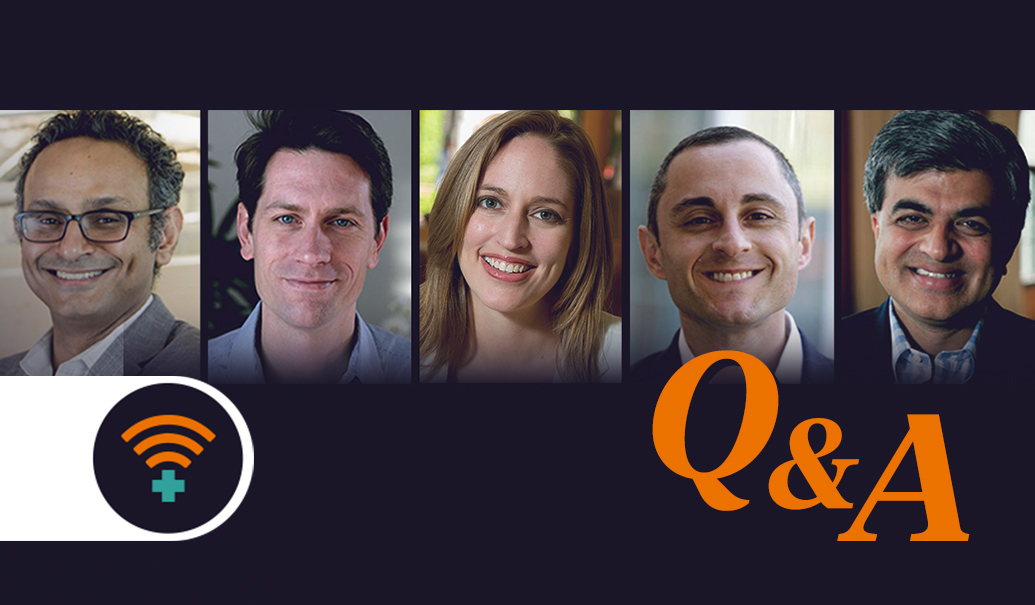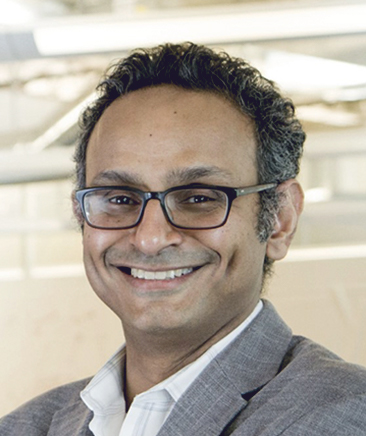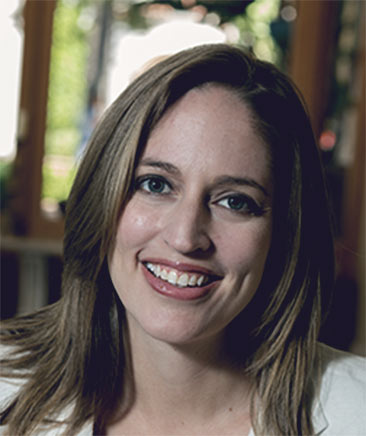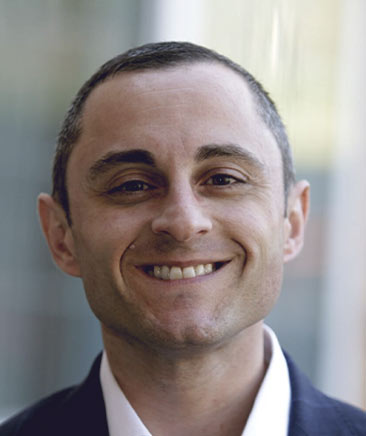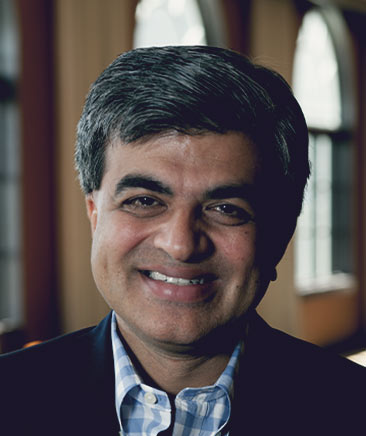Healthcare consumers, providers and industry members may agree that healthcare is disconnected. But introducing the solutions needed to bridge those gaps—regardless of the dollars and disruptors focused on doing so—hasn’t happened yet.
Continuing a conversation with our CEO and principals who are experts in biopharma, health plans and medtech, we discussed what it will take to create the kind of healthcare system we’d all like to see. They brought stories of positive surprises they are encountering within the industry, including examples of innovative collaborations and partnerships that aim to redefine care. Examining recent efforts to connect health, our experts debate the potential for technology to solve ills or introduce more. And in the aim to strengthen equity and trust, they share the mindset changes required to build the bridges that will help the industry move from sick care to life care.
ZS: We have discussed what the healthcare industry can do to deliver connected health. Are you seeing any action happening as a result of consortiums or cross-functional initiatives working to solve big healthcare challenges?
Ahmed Albaiti: There are therapeutic areas and programmatic care models where consortiums make a ton of sense, such as rare disease. One example is in neurology, where arch-rival pharma companies are concluding that launching competing products will create all kinds of confusion in the market. They’re starting to talk to institutions and registries who are pushing for a consortium approach. There are definitely places where it serves no one to be competitive.
Pratap Khedkar: Standardization of information is a big opportunity, such as what’s been happening over the last few years around interoperability and the development of the HL7® FHIR® standard for healthcare information exchange out of the SMART Health IT project. We’re seeing more groups come together and agree to stick to one approach. Right now it’s slow, but it’s working.
Peter Manoogian: Another example is Purchaser Business Group on Health. It’s a consortium of 40 private employers that represents 21 million covered employees in the U.S. There’s no competition there, just a shared goal to improve healthcare spend. And they’re having success with innovative methods for contracting with providers and finding ways to provide better benefits to employees.
Maria Whitman: Scale is key, and digital health solutions have opened opportunities for partnership to drive scale. One example of a consortium forming is Biogen, Apple and UCLA joining forces in a program where researchers can track data from mHealth devices like smartwatches and smartphones to identify depression and early signs of cognitive decline. Partnering this way brings together technological expertise, clinical expertise, longitudinal data, customer experience and trusted relationships that any one organization may lack internally.
ZS: Let’s talk about technology, which plays such an important role in connecting health. We acknowledge that technology isn’t curing all ills today. Where do you think it’s becoming a burden for both care providers and patients instead of living up to its promise to make things easier?
Brian Chapman: I have a client who thinks a lot about this. Their original mentality was doctors are very mistrustful of consumer tech like wearable devices. But the reality is that most doctors are finding they can actually use consumer wearables to find tremendous insights about patients. The problem is, they’re not paid to do it. The infrastructure for reviewing this data is very difficult and it introduces potential liability. These consumer devices could offer medical insight, but somehow don’t yet fit into the infrastructure of reimbursement and clinical decision-making.
PK: To put it simply, more technology will create more data. But the data doesn’t know where to go. The infrastructure to generate it is created by technology, but the infrastructure to absorb it, which includes human brains, decision-making and actions, is simply just not there. It’s not like it can’t keep up—nobody’s designed the system.
AA: The Apple Watch was a great example of showmanship over pragmatic use because it generates so many false alerts. When we talked to Yale cardiologists they told us, “I would never use an Apple Watch in my general care. But I’ll do research with it because it’s really interesting.”
An actigraphy device is the complete opposite—very well accepted by clinicians. It plugs into the right infrastructure, but the device is huge. It’s like a brick on your wrist. Nobody wants to use it.
Everybody wants to get the most out of these one billion devices that are sitting on people’s wrists. But like Pratap said, there’s no guidance on how to use them in a uniform manner or even a third party that explains the equivalency of one step on a Fitbit versus an Apple Watch.
ZS: Too much data without guidance can create more anxiety—for example a diabetes tracker that sends floods of alerts without providing context about what to do next. People need data that helps them make a decision or take an action.
AA: I think we have to be, as an industry, open to unexpected positive surprises. One example is the VA scale for pain with the happy and sad faces. We moved to a digital version where the patients would get calls when their pain went up. And then they started lying about their pain levels because they didn’t want to talk about this. So they got a Fitbit. And guess what? The Fitbit activity level was a three times more accurate reflector of pain than the VA scale. And they had much better clinical encounters as a result because their pain was passively monitored.
PM: Exactly. The industry talks about value-based care and how it’s related to clinical outcomes. Value isn’t just about the outcomes. It’s about the experience and the outcomes.
BC: If you lower the barrier for humans to access care, they’re likely to access it in a very different way than if they have to wait until something’s wrong. Consumer-oriented wearable devices can be a great way to bring healthcare to healthy people instead of making them wait for sick care.
MW: I love this example, Brian, because it is a sign that 89% of adults in the U.S. will use Dr. Google before engaging in the system. In our everyday lives we look for simplicity, ease and speed. I always think of Apple and the success it achieved through its laser focus on simplicity. As consumers, we should expect that same experience in health. Those creating the interfaces and alerts will need to strongly lean in on user design that works—and not just for patients, but for the doctor who has more data to understand, synthesize and trust.
ZS: Peter, going back to your comment about experience being part of the value in value-based care. What examples have you seen where health plans are focusing more on customer experience?
PM: Even in the Medicare space, many plans now are focusing on a digitally enabled care model with one primary person who’s the quarterback. Older adults want this relationship—there’s been a lot of research behind this. I have a client that is trying to move to this model where members have one person at the center who is their primary relationship. That person triages the member to other people as needed. Before, that member would have had to talk to as many as 12 people to get the same information. It is, for sure, a consumer experience play, and the net promoter score coming from member feedback thus far has been very positive.
ZS: Based on what we heard in our research, healthcare consumers in the U.S. want more equity in their care. What solutions can the industry start to put into place now, either through partnerships or individual actions, to get us there?
MW: It is the healthcare industry’s obligation to answer the call to action around health equity. A study conducted by Verywell Health found that 59% of Black patents reported that racism forced them to discontinue or suspend medical treatment in some way. I recently did a webinar with HLTH on the disconnect in healthcare for women, where we discussed the mounting evidence of differences in outcomes. Solutions are needed everywhere, but clinical trials are one place pharma is digging in. Though the U.S. population is 12% Black, 18% Latin and 5% Asian, individuals from these demographics are highly underrepresented in clinical trials. The COVID-19 vaccines from Pfizer-BioNTech and Moderna were hailed for representing more patients, with Pfizer bringing in 42% of its trial participants from racially and ethnically diverse backgrounds. Recently, Merck and Sanofi have also joined forces with Novartis to increase diversity in clinical trials through the Beacon of Hope program.
PK: One hypothesis as to why equity doesn’t happen is because of location. If healthcare is something you go to and get somewhere, then different people will have different thresholds for doing that based in affordability, availability, mobility and so on. There will be variability that’s correlated with social determinants of health, income, etc. The point is, you’re now putting agency fully on the patient. And so then the question is, if healthcare becomes a state of being instead of a location, could that be one path to healthcare equity?
BC: There are a few reasons why healthcare is not equally distributed. One is a lack of access to the diagnosis. Another is a lack of access to the solution, whether it’s technology-driven or not. If we can democratize the ability to get a diagnosis by moving it closer to the patient, there’s some hope. But of course the challenge is, if it’s reliant on something the patient has to pay for, then it’s further out of reach. There’s a real potential for technology to go one of two ways—to exacerbate or help.
PM: And there’s so much more to health equity than can be solved within the traditional healthcare industry. I think about expanding broadband, for instance. That doesn’t just affect urban communities. Rural communities face peril if healthcare continues to be more virtualized. Who’s going to improve the broadband access in a rural community, for instance? So there are infrastructure questions that may also require intervention by other groups like state and federal governments if we want to drive scalable change in these areas.
PK: One thing that has stayed with me for a long time was when I heard the head of Northwell Health, a health system in New York, say, “For Medicare populations with diabetes, the top two factors are loneliness and food insecurity. So I don’t even think of diabetes medication as a solution. Because my first priority is to fix these two." Many factors that drive healthcare issues are under the purview of no one—unless you say it’s the government. How does the government fix loneliness? No player today can even try to fix it, even if they were so inclined. The payer can’t do it. The provider can’t do it. The pharma company certainly can’t do it.
AA: There’s sick care and healthcare. And I think we’re missing what I would call life care. A lot of the things Pratap is talking about relate to life care. The guys from Rally Health launched DUOS, which is exactly targeted to help deal with loneliness. There are social determinants of health measures that Kaiser has adopted. Humana acquired primary care practices that have standard malnutrition screening now.
Some stakeholders have started to redefine what care is, but care is still very fragmented. If one pharma company wants to work with another, there is no vehicle for this. The way we define care is a rough sport. And that’s why you have cracks where people fall through. Redefining care in categories that intersect creates a model where everybody benefits, because then people can bring their strengths to the table. Whether it’s a pharma company, health plan or community care clinic, all stakeholders can then participate in care.
PM: There’s a company called Papa that helps combat loneliness. A lot of health plans are being progressive in this area because there’s huge benefit to the local community as well, even beyond just that one member. Humana has certain communities they’ve identified as bold goal communities to improve healthy days within certain populations in the community. Other health plans are doing this too.
ZS: Tying back to our research, consumers told us that trust is another bridge that has to be built to ensure equity in healthcare. Where does the industry need to focus on building trust to achieve what people want from connected health?
PK: It’s not just patient or consumer trust. It’s trust between two large companies. The reason pharma and payers can’t agree on value-based care is payers think, “Oh, you’re just finding ways to get paid exorbitant prices.” And the pharma company’s saying, “You’re just trying to find a reason to ask me for a 40% discount.” So they don’t really trust each other. And the payers and providers, they keep fighting all the time. So forget about the poor patient or the consumer.
AA: I wonder, what can we learn from the COVID-19 vaccination story? How does that relate to what we’ve been talking about—trust, experience, outcomes, life care. It was a test of whether we could move things forward. But it also exposed all the soft underbellies and problems everybody knew about. But all bad things are good things, because now you know they’re there.
BC: I think it revealed so many important things. For example, we’re really good at running trials. We’re really good at cold chain logistics. We’re really good at manufacturing. We’re not so good at convincing people what to do. We’re not so good at actually measuring and having interoperable records. The idea is, we have one muscle that’s really good and some really important muscles that are really not working for large sections of society.
MW: Trust cannot be ignored because you need trust to create better health outcomes. According to ZS’s survey on the future of health, while nearly all U.S. adults trust their doctors when it comes to sharing personal healthcare data, fewer (63%) trust pharmaceutical companies with it. Interestingly, those who do trust pharma have a higher propensity to engage in connected health. So what do we do? Build transparency wherever possible. COVID-19 and autologous cell therapies have highlighted the need to improve supply chain transparency, for example. Many manufacturers have now joined PharmaLedger, a blockchain consortium, to improve supply chain transparency and assure patients that their personal health information will stay private. We need more partnerships like this with stakeholders across the health ecosystem making efforts to—piece by piece—improve transparency, trust and equity of care. This is how we get closer to achieving the true promise of the future of health.
Add insights to your inbox
We’ll send you content you’ll want to read – and put to use.











